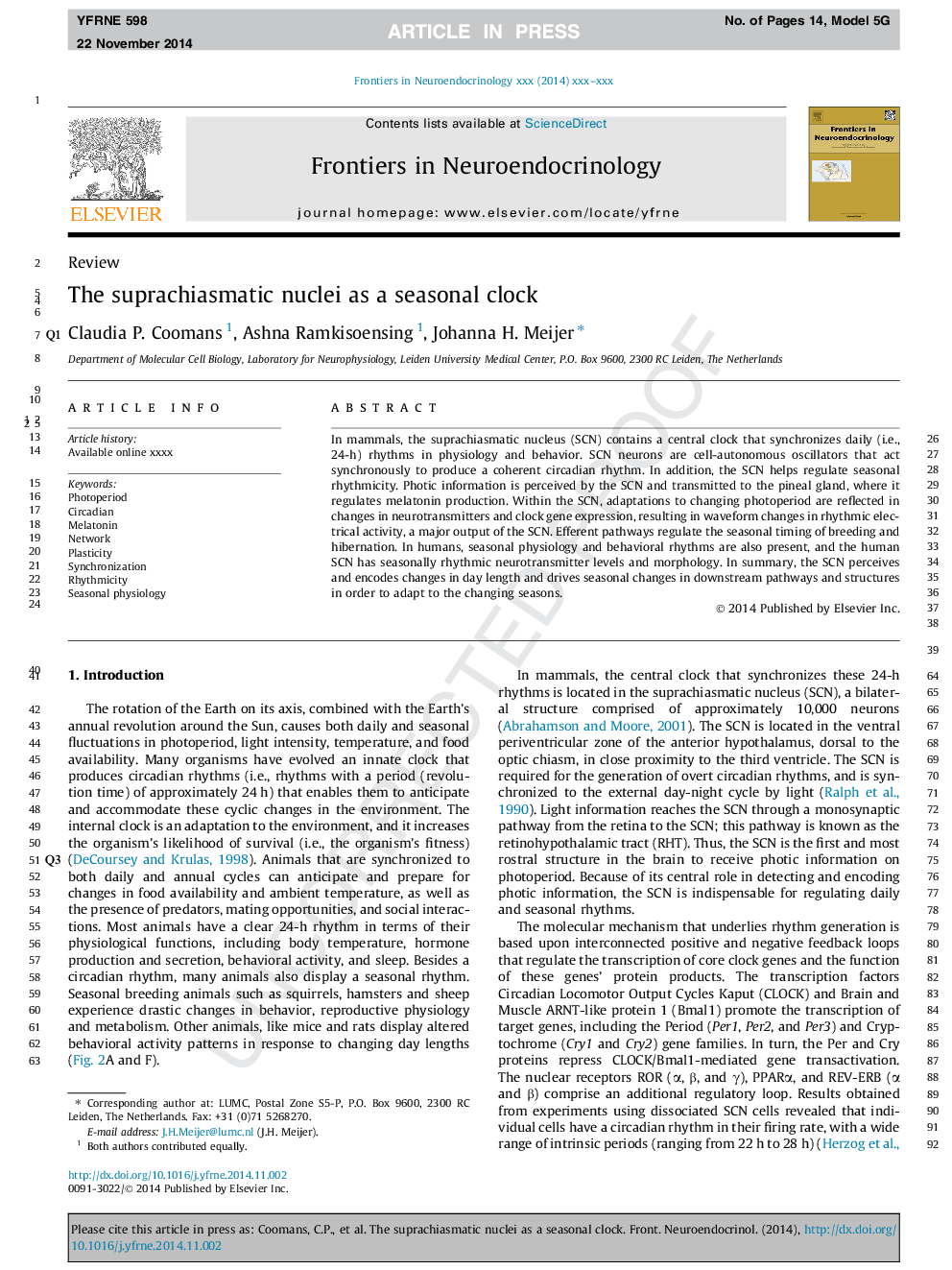| Article ID | Journal | Published Year | Pages | File Type |
|---|---|---|---|---|
| 5900641 | Frontiers in Neuroendocrinology | 2015 | 14 Pages |
Abstract
In mammals, the suprachiasmatic nucleus (SCN) contains a central clock that synchronizes daily (i.e., 24-h) rhythms in physiology and behavior. SCN neurons are cell-autonomous oscillators that act synchronously to produce a coherent circadian rhythm. In addition, the SCN helps regulate seasonal rhythmicity. Photic information is perceived by the SCN and transmitted to the pineal gland, where it regulates melatonin production. Within the SCN, adaptations to changing photoperiod are reflected in changes in neurotransmitters and clock gene expression, resulting in waveform changes in rhythmic electrical activity, a major output of the SCN. Efferent pathways regulate the seasonal timing of breeding and hibernation. In humans, seasonal physiology and behavioral rhythms are also present, and the human SCN has seasonally rhythmic neurotransmitter levels and morphology. In summary, the SCN perceives and encodes changes in day length and drives seasonal changes in downstream pathways and structures in order to adapt to the changing seasons.
Related Topics
Life Sciences
Biochemistry, Genetics and Molecular Biology
Endocrinology
Authors
Claudia P. Coomans, Ashna Ramkisoensing, Johanna H. Meijer,
